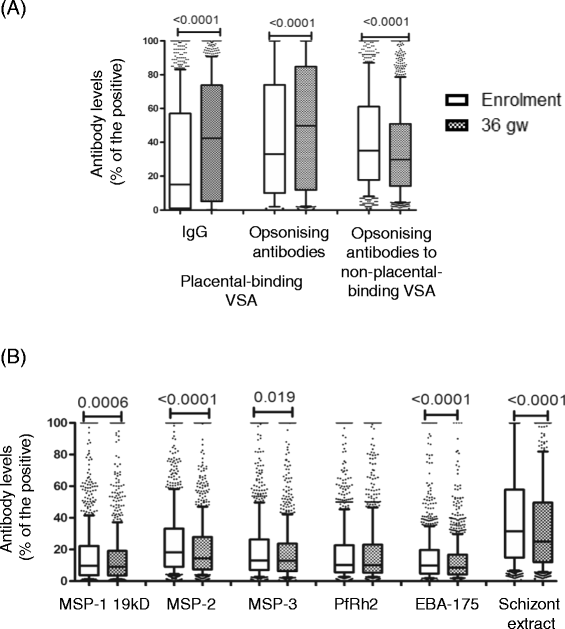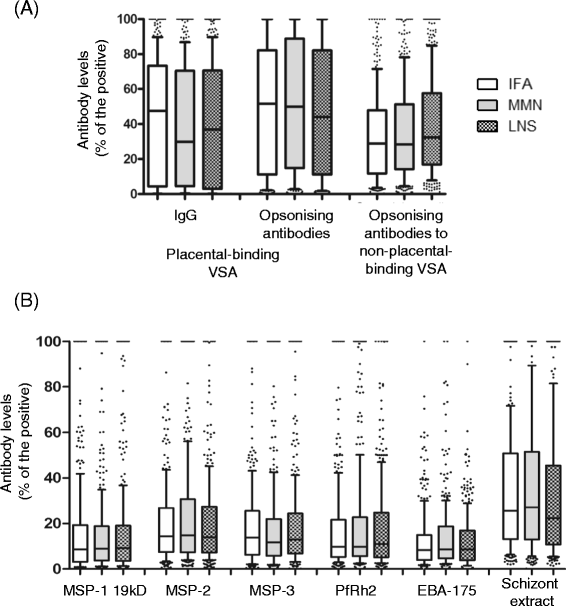The impact of lipid-based nutrient supplementation on anti-malarial antibodies in pregnant women in a randomized controlled trial
- PMID: 25957793
- PMCID: PMC4438573
- DOI: 10.1186/s12936-015-0707-2
The impact of lipid-based nutrient supplementation on anti-malarial antibodies in pregnant women in a randomized controlled trial
Abstract
Background: Malaria and undernutrition frequently coexist, especially in pregnant women and young children. Nutrient supplementation of these vulnerable groups might reduce their susceptibility to malaria by improving immunity.
Methods: Antibody immunity to antigens expressed by a placental-binding parasite isolate, a non-placental binding parasite isolate, merozoites and schizonts at enrolment (before 20 gestation weeks) and at 36 gestation weeks were measured in 1,009 Malawian pregnant women receiving a daily lipid-based nutrient supplement, multiple micronutrients or iron and folic acid, who were participants in a randomized clinical trial assessing the effects of nutrient supplementation on pregnancy outcomes and child development (registration ID: NCT01239693).
Results: Antibodies to placental-binding isolates significantly increased while antibodies to most merozoite antigens declined over pregnancy. Overall, after adjustment for covariates, the type of supplementation did not influence antibody levels at 36 gestation weeks or the rate of change in antibody levels from enrolment to 36 weeks. A negative association between maternal body mass index and opsonizing antibodies to placental-binding antigens (coefficient (95% CI) -1.04 (-1.84, -0.24), was observed. Similarly, women with higher socioeconomic status had significantly lower IgG and opsonizing antibodies to placental-binding antigens. Neither of these associations was significantly influenced by the supplementation type.
Conclusions: In the current cohort nutrient supplementation did not affect anti-malarial antibody responses, but poor and undernourished mothers should be a priority group in future trials.
Figures



References
-
- UNSCN . Fourth report on the world nutrition situation: nutrition throughout the life cycle. Geneva: United Nations Administrative Committee on Coordination Sub-Committee on Nutrition, (ACC/SCN); 2000.
-
- Landis SH, Lokomba V, Ananth CV, Atibu J, Ryder RW, Hartmann KE, et al. Impact of maternal malaria and under-nutrition on intrauterine growth restriction: a prospective ultrasound study in Democratic Republic of Congo. Epidemiol Infect. 2009;137:294–304. doi: 10.1017/S0950268808000915. - DOI - PubMed
Publication types
MeSH terms
Substances
Associated data
LinkOut - more resources
Full Text Sources
Other Literature Sources
Medical

